Basic Brown Bread; a simple but yummy everyday loaf that goes with anything, and isn’t too complicated or time-consuming to throw together!
As much as I love experimenting with new flavours and unusual ideas there are days when nothing can beat the basics. Days when I look forward to coming home from uni lectures, rolling my sleeves up and just getting my hands into good old-fashioned bakes. Today was one of those days.
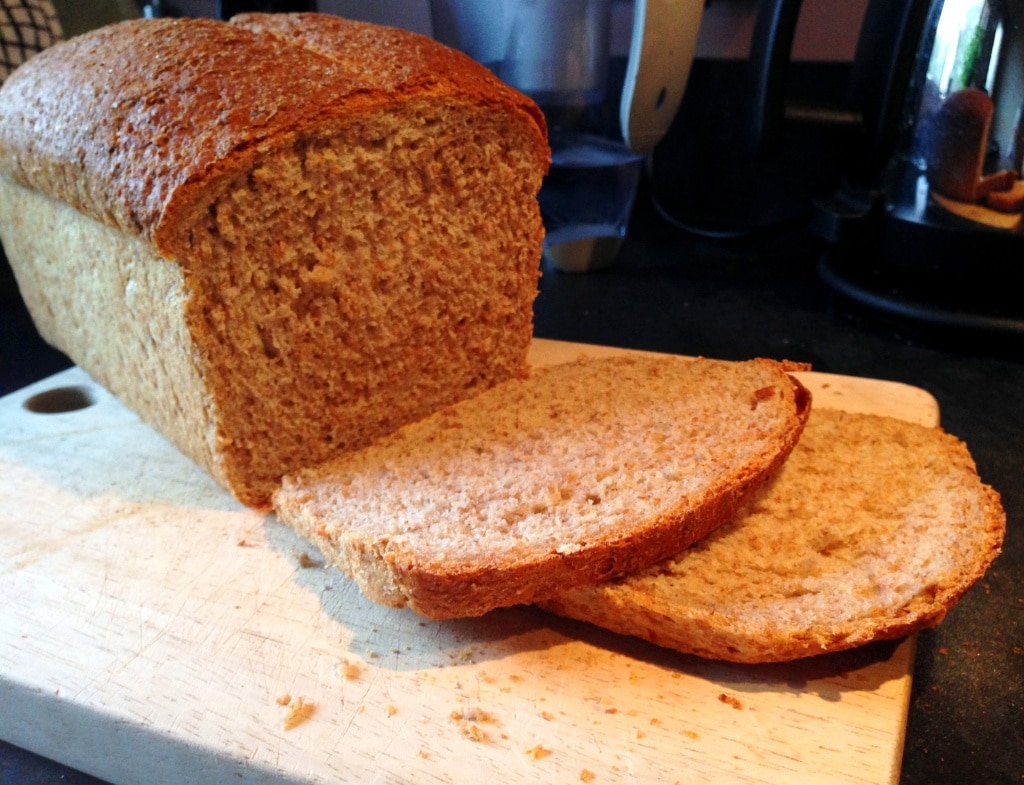
Proper basic brown bread is a timeless creation. You can stick seeds, fruit, bells and whistles into it to make it more impressive and exciting but the original will always still be relevant. The original can be enjoyed plain, toasted, spread or stuffed with something tasty which are just a few of the reasons it has remained present in day-to-day foodstuffs for so many centuries.
When I first began baking, myself and bread had a tricky relationship. I lacked patience while it just didn’t seem to care what I wanted from it. However, we’ve taken some time to work things out for the sake of the kids and we’ve learned to get along quite swimmingly.
Nowadays, I love bread. I love kneading the dough, kicking back and letting the yeast do its thing for a while before baking it and being able to smile proudly upon a perfect loaf that I’ve made with my own two hands. It’s a great feeling to create something that so many of us rely so heavily on supermarkets to un-lovingly mass produce for us.
Bread takes time but it isn’t time-consuming for the lucky soul creating it. You’ll have a little waiting time but I promise you, if you follow some basic steps, bread isn’t as scary or tricky as you – like I used to – think.
This basic brown bread recipe makes enough dough to make a light wholemeal bloomer, standard loaf or even 10-12 little bread rolls. It was inspired by a recipe from James Morton’s “Brilliant Bread“, with a few tweaks. I’ve added some honey for a little more flavour and some rolled oats for texture and flavour too, you don’t need to add these if you don’t want to though!
Look out a big bowl and weigh in the two types of flour. Pour the salt into one side of the bowl and the packet of yeast into the other. Use your fingers to rub these into the flour on the opposing sides, if you mix the salt straight into the yeast you might prevent your yeast from working. No one wants a flat loaf!
Next, add your honey and oats into the bowl, followed by your lukewarm water. Make sure the water isn’t too hot or cold as this can also stop the yeast in its tracks – yeast is a very fussy mistress.
Use either your hands or a spoon to bring all these ingredients together into a soft but workable dough.
Tip this dough onto a lightly floured work surface, roll your sleeves up and give it a good vigorous knead for about 10 minutes. There are no real rules to kneading dough, just as long as you work it well and the end product is smooth and fairly elastic, you’re on the right track! My scrawny arms mean I’ve never been very good at it…
Once the dough is noticeably smoother and stretchier, roll it up into a ball and pop it into a lightly oiled bowl. Cover the bowl with clingfilm or a clean tea towel and place it in a warm place such as a boiler cupboard or near a radiator for about an hour until the dough has doubled in size.
While you put your feet up and enjoy a cup of tea in these 60 minutes, the yeast is feeding on the other ingredients and growing rapidly. Allowing it to do this creates a lovely fluffy texture and a delicious natural flavour that you very rarely find the processed supermarket loaves. Plus its really cool to see how much it grows and changes in just a short space of time, just look at how many little bubbles appear in that little ball of dough!
Once the dough has doubled in size, tip it onto a lightly floured work surface again and manipulate it into your desired shape. I opted for a plain old loaf, which I achieved by stretching the dough out lengthways and rolling it into a fairly neat sausage shape.
If like me you’re not very talented at shaping dough, just tuck any rough bits of dough underneath to give you a nice smooth, taut top! If you would rather a bloomer shape or have the dough divided into rolls then just shape your dough into a ball and place it onto an oiled baking tray.
If like me, you choose to make your basic brown bread in a loaf shape then make sure to oil your loaf tin well and shape your dough to fit neatly inside it.
Once shaped and placed on/in the tin you’ll be baking it in, allow the dough to rest in that same warm place for a further hour until it has noticeably increased in size again. During this wait, preheat your oven.
Now that your dough is puffy and has grown again, you should use a knife to lightly score the bread, this helps it bake evenly. I just drew a knife lightly down the dough’s full length to give it that classic loaf shape when I baked it.
Pop the bread into the oven and bake it until the bread is golden brown and sounds hollow when tapped from underneath. Rolls or smaller loaves will take less time than a big loaf, so just keep your eye on it!
When you’re happy that your basic brown bread loaf is ready, take it out of the oven and place it on a wire rack to cool completely before you try and slice into it. As tempting as warm bread is, slicing into it too soon will just become a crumbly mess, so try and be patient!
Once cooled, feel free to slice your basic brown bread up and spread or fill it with whatever you like. I enjoyed my first slice mopping up the leftover cheesy sauce from tonight’s vegetable lasagne. Yum!
Now don’t be shy, bread is one of those things that I think everyone should be able to make like roast chicken or a boiled egg…or a Pot Noodle. Give it a go!
Thanks, and see you soon!
Basic Brown Bread
A simple but yummy basic brown bread that isn't too complicated to throw together!
Notes
BE A MAVERICK: why not add some dried herbs for extra flavour?
Ingredients
- 300g strong wholemeal bread flour
- 200g strong white bread flour
- 1 packet of dried fast-action yeast
- 1 tsp salt
- 1 tbsp honey
- 50g rolled oats (optional)
- 370ml lukewarm water
Instructions
- Look out a big bowl and weigh in the two types of flour. Pour the salt into one side of the bowl and the packet of yeast into the other. Use your fingers to rub these into the flour on the opposing sides.
- Next, add your honey and oats into the bowl, followed by your lukewarm water. Make sure the water isn’t too hot or cold as this can also stop the yeast in its tracks.
- Use either your hands or a spoon to bring all these ingredients together into a soft but workable dough.
- Tip this dough onto a lightly floured work surface, roll your sleeves up and give it a good vigorous knead for about 10 minutes.
- Once the dough is noticeably smoother and stretchier, roll it up into a ball and pop it into a lightly oiled bowl. Cover the bowl with clingfilm or a clean tea towel and place it in a warm place such as a boiler cupboard or near a radiator for about an hour until the dough has doubled in size.
- Once the dough has doubled in size, tip it onto a lightly floured work surface again and manipulate it into your desired shape. To make a plain loaf shape, stretch the dough out lengthways and roll it into a fairly neat sausage shape. If you would rather a bloomer shape or have the dough divided into rolls then just shape your dough into a ball and place it onto an oiled baking tray.
- If you choose to make your bread in a loaf shape then make sure to oil your loaf tin well and shape your dough to fit neatly inside it.
- Once shaped and placed on/in the tin you’ll be baking it in, allow the dough to rest in that same warm place for a further hour until it has noticeably increased in size again. During this wait, preheat your oven – 210 degrees for conventional ovens or 200 for fan ovens.
- Now that your dough is puffy and has grown again, you should use a knife to lightly score the bread, this helps it bake evenly.
- Pop the bread into the oven and bake it for 25 minutes. If you’ve used a loaf tin, you should now remove it from the tin and pop it back in to bake for a further 15-20 minutes. If you haven’t used a tin then just bake it for 30-40 minutes or until the bread is golden brown and sounds hollow when tapped from underneath. Rolls or smaller loaves will take less time than a big loaf, so just keep your eye on it.
- When you’re happy that the loaf is ready, take it out of the oven and place it on a wire rack to cool completely before you try and slice into it.
- Enjoy!
You may also like:
[THIS POST CONTAINS AFFILIATE LINKS]



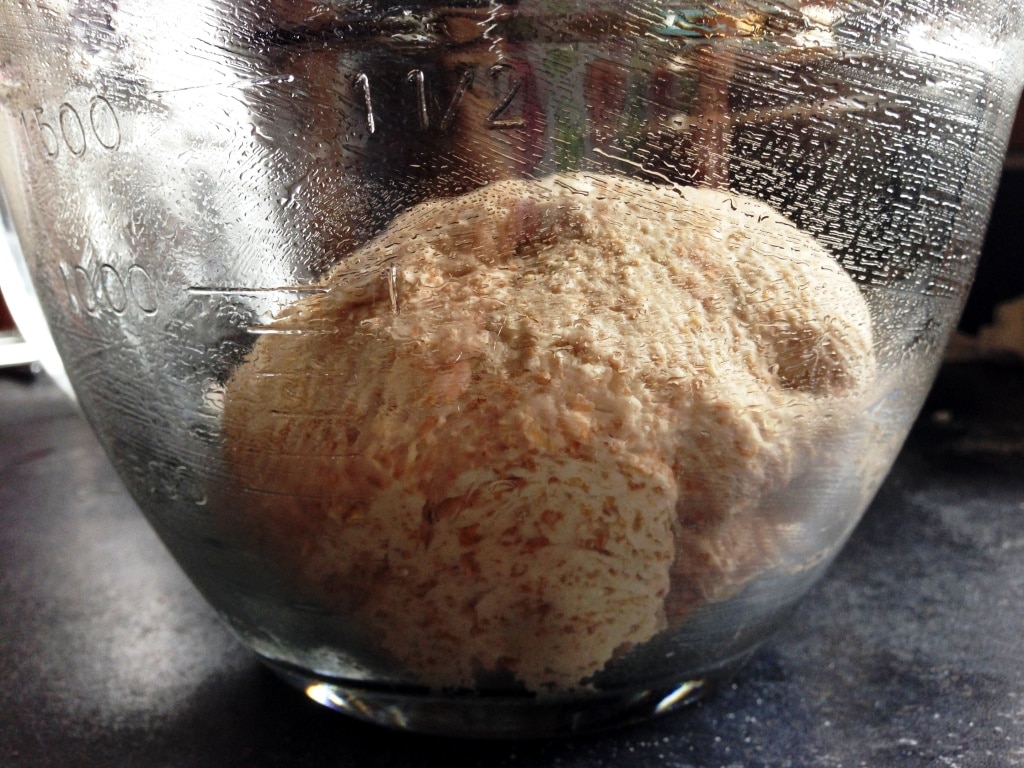
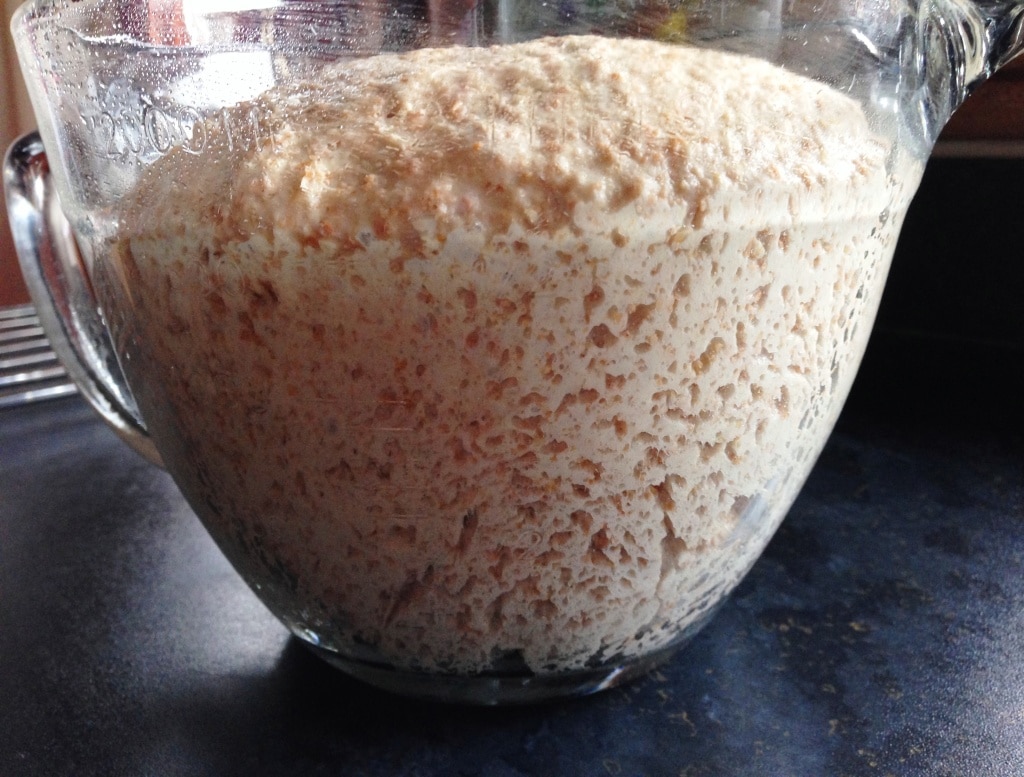
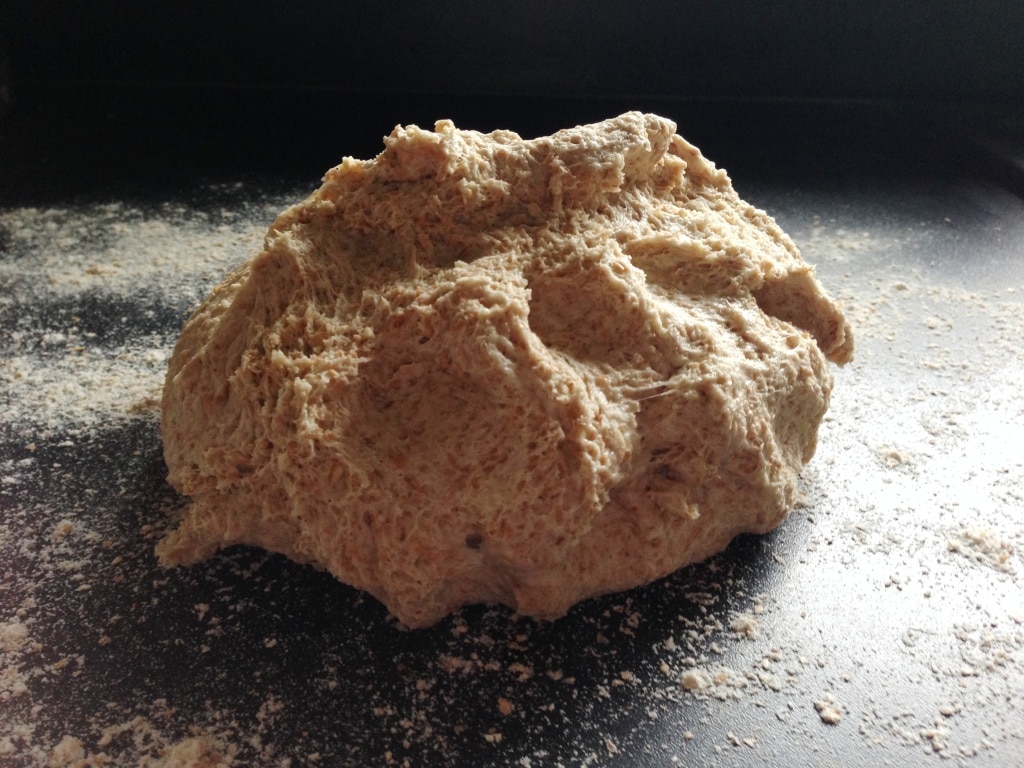
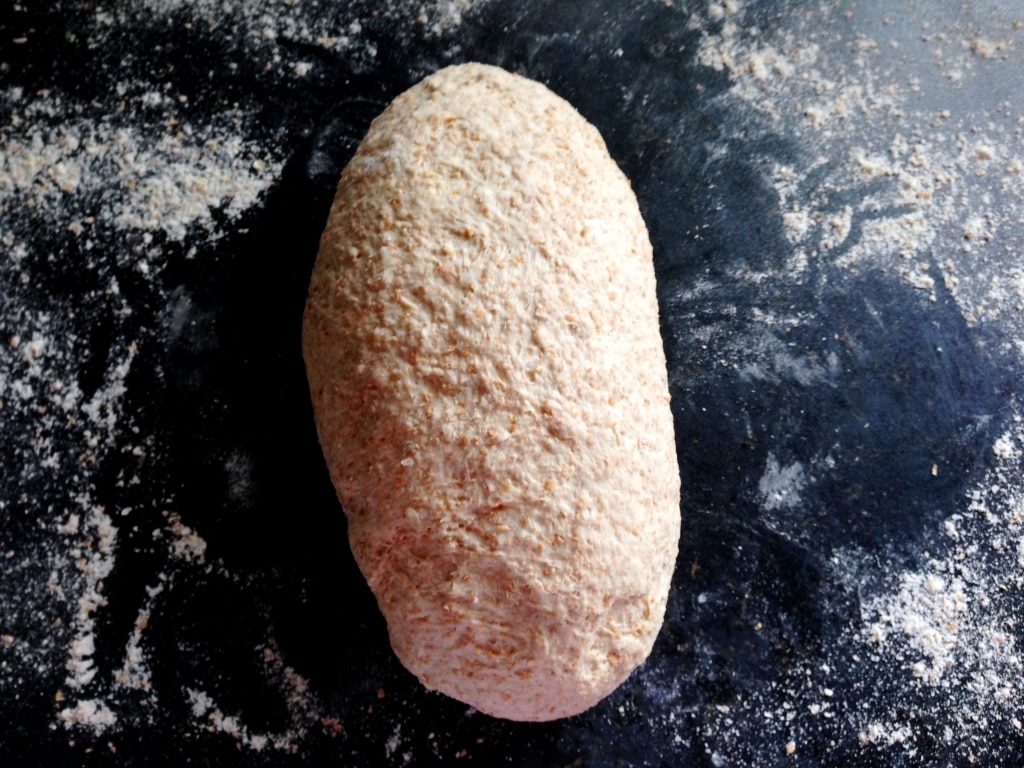
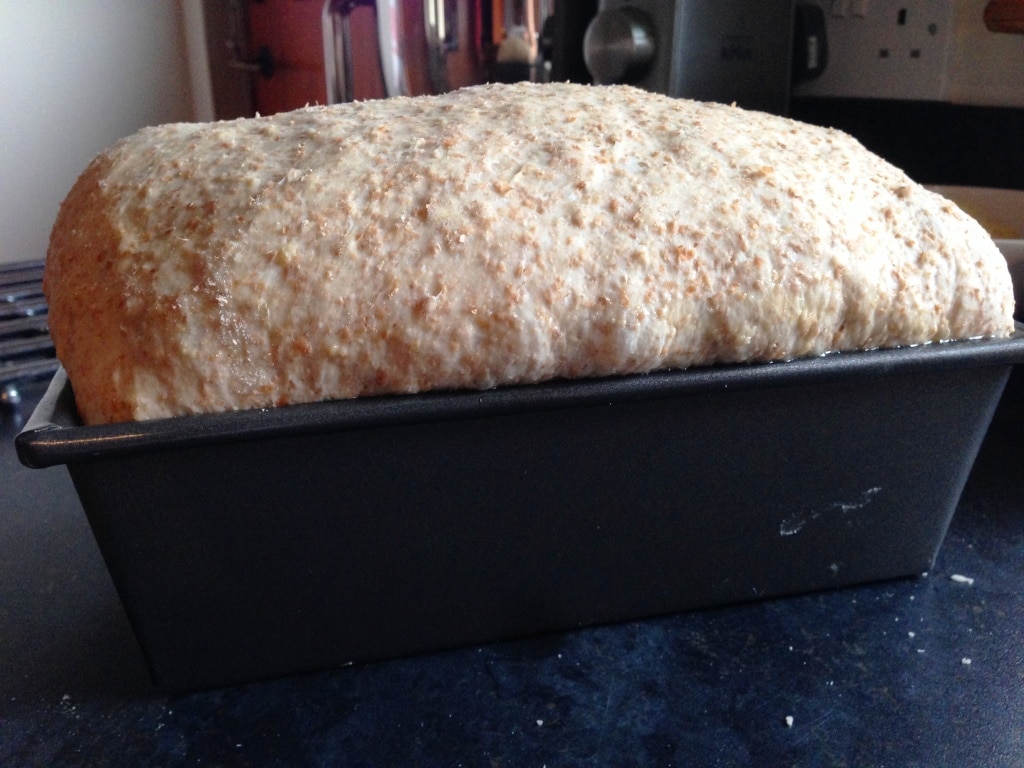
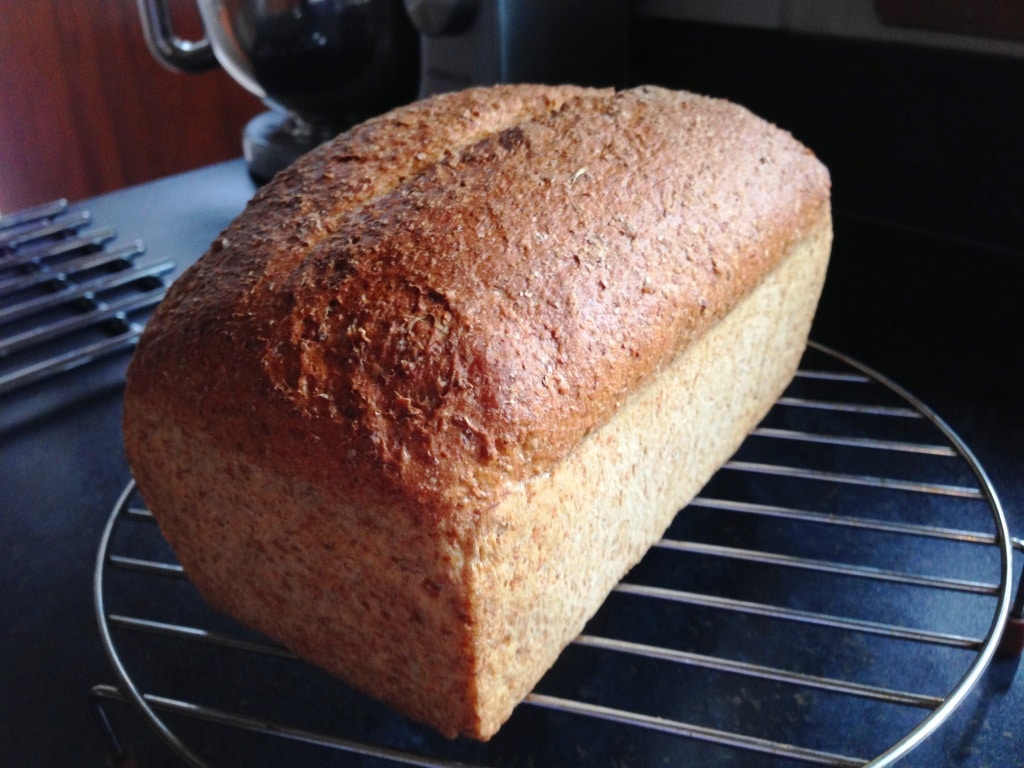



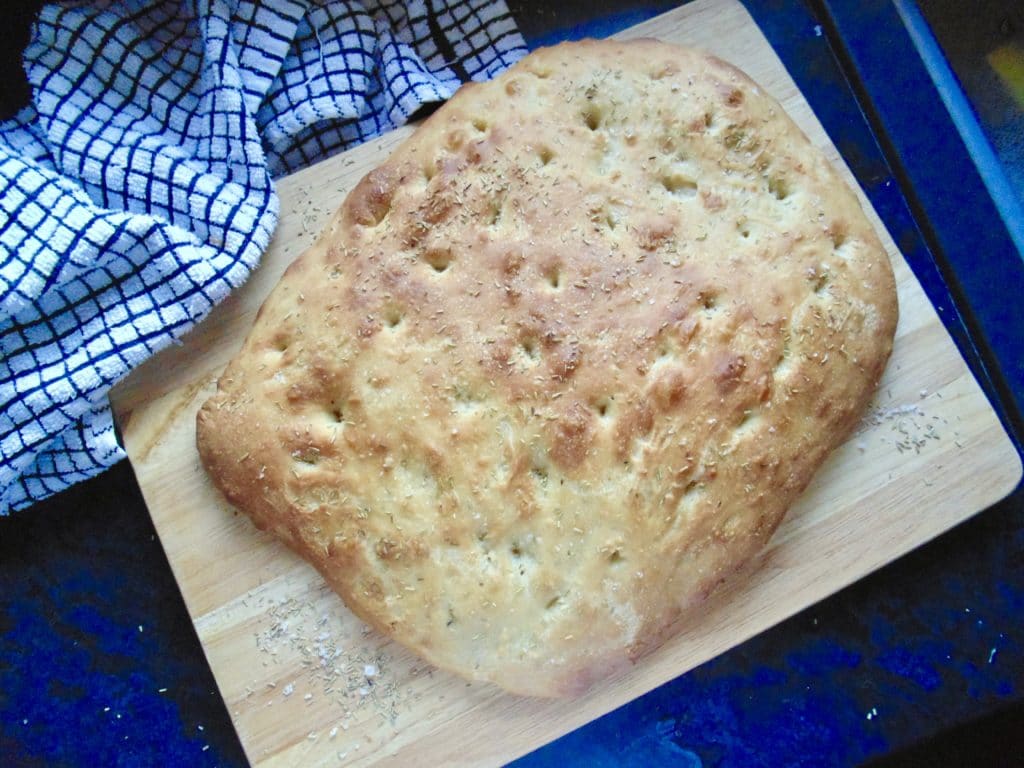
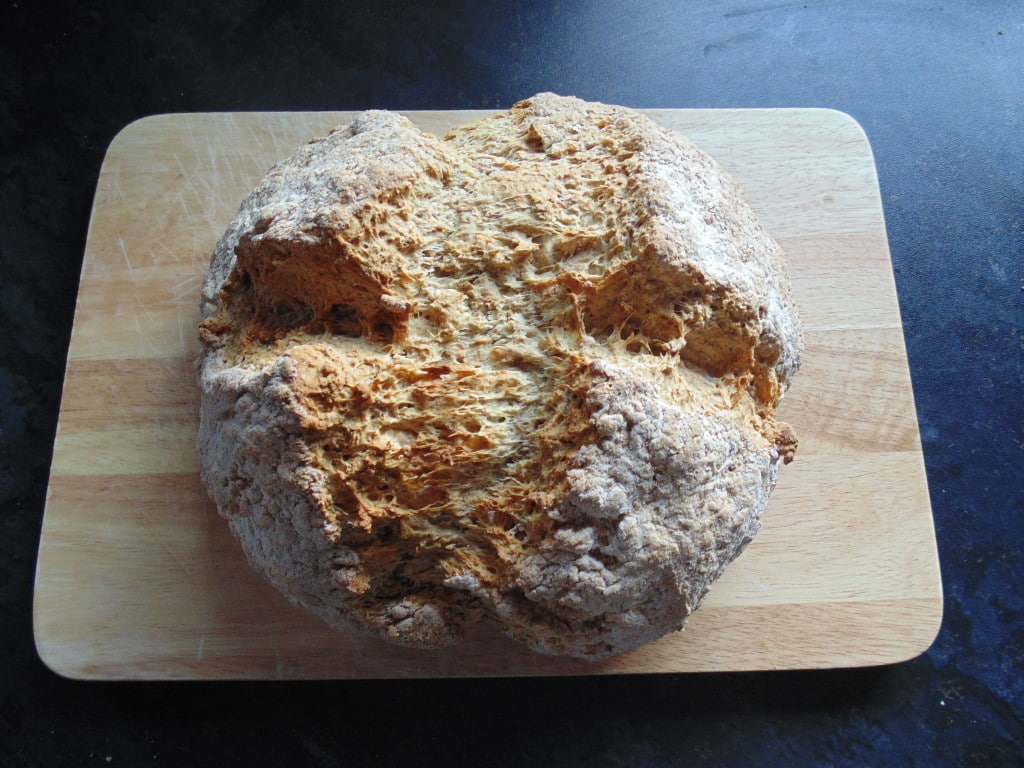

Very nice.im trying ot hope it comes out well.thank you.